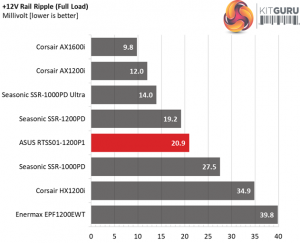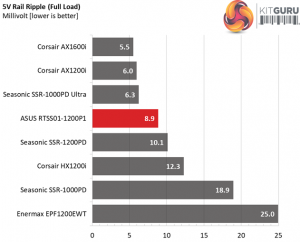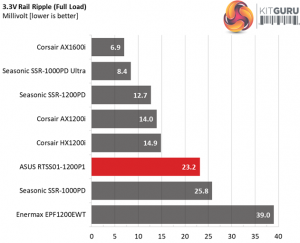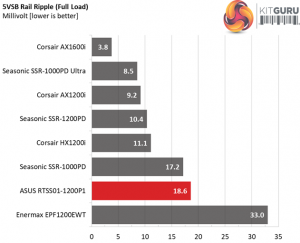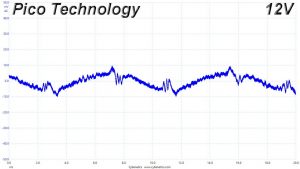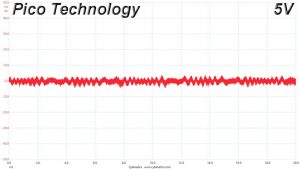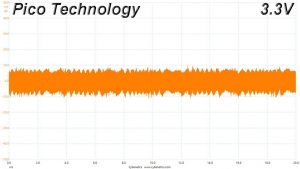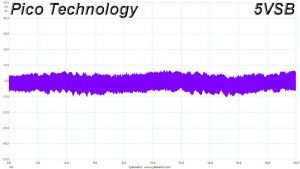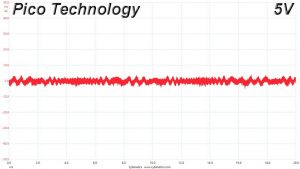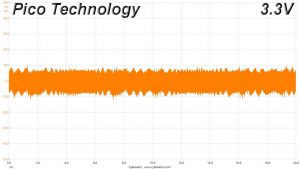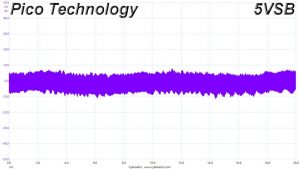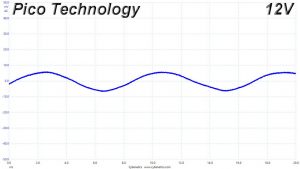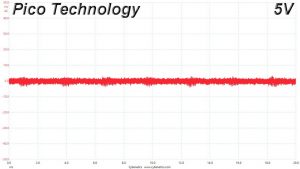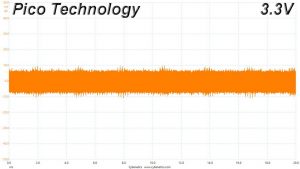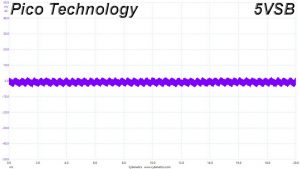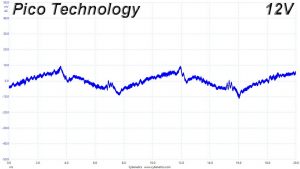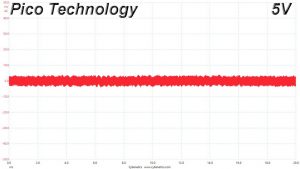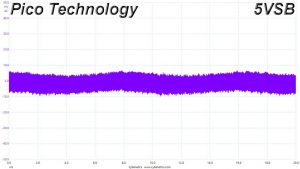To learn how we measure ripple, please click here.
The following table includes the ripple levels we measured on the RTSS01-1200P1’s rails. The limits, according to the ATX specification, are 120mV (+12V) and 50mV (5V, 3.3V, and 5VSB).
| Test | 12V | 5V | 3.3V | 5VSB | Pass/Fail |
| 10% Load | 13.3 mV | 4.4 mV | 12.4 mV | 7.3 mV | Pass |
| 20% Load | 14.9 mV | 4.6 mV | 14.3 mV | 8.4 mV | Pass |
| 30% Load | 8.7 mV | 4.7 mV | 14.8 mV | 9.1 mV | Pass |
| 40% Load | 8.7 mV | 4.9 mV | 15.7 mV | 8.7 mV | Pass |
| 50% Load | 10.2 mV | 6.1 mV | 16.6 mV | 10.6 mV | Pass |
| 60% Load | 11.0 mV | 6.3 mV | 17.5 mV | 11.6 mV | Pass |
| 70% Load | 12.3 mV | 6.5 mV | 18.4 mV | 13.6 mV | Pass |
| 80% Load | 13.7 mV | 7.8 mV | 22.1 mV | 15.2 mV | Pass |
| 90% Load | 16.3 mV | 8.3 mV | 21.9 mV | 16.9 mV | Pass |
| 100% Load | 20.9 mV | 8.9 mV | 23.2 mV | 18.6 mV | Pass |
| 110% Load | 21.5 mV | 9.5 mV | 22.5 mV | 20.9 mV | Pass |
| Crossload 1 | 13.7 mV | 7.7 mV | 22.1 mV | 7.7 mV | Pass |
| Crossload 2 | 21.5 mV | 6.5 mV | 13.8 mV | 17.2 mV | Pass |
The ripple suppression is very good overall. Only the 3.3V rail is a bit high compared to the rest rails. With the use of extra in-cable caps ripple would be lower, however the cables would be bulkier. On top of that, it isn't so easy to add filtering caps on individually sleeved cables, so we believe that for a few mV lower ripple it doesn't worth the trouble, in this platform at least.
Ripple Oscilloscope Screenshots
The following oscilloscope screenshots illustrate the AC ripple and noise registered on the main rails (+12V, 5V, 3.3V and 5VSB). The bigger the fluctuations on the screen, the bigger the ripple/noise. We set 0.01 V/Div (each vertical division/box equals 0.01V) as the standard for all measurements.
 KitGuru KitGuru.net – Tech News | Hardware News | Hardware Reviews | IOS | Mobile | Gaming | Graphics Cards
KitGuru KitGuru.net – Tech News | Hardware News | Hardware Reviews | IOS | Mobile | Gaming | Graphics Cards


